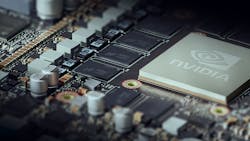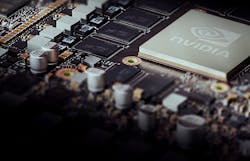Starting in 2022, All New Hyundai Models Will Feature DRIVE IVI Platform
Korean carmaker Hyundai, together with its sister brands Kia and Genesis, plans to install in-vehicle infotainment in its cars based on Nvidia's DRIVE computer platform. The automotive group is thus laying the foundation for a centralized system that’s networked, updatable, and software-defined at all times. The move will enable the group's next-generation vehicles to combine audio, video, navigation, connectivity and artificial-intelligence (AI)-based “connected car” services.
Hyundai Motor Group has been working with Nvidia since 2015, and the Nvidia DRIVE platform already underpins the IVI systems found in the Genesis GV80 and G80 vehicles. The companies have also collaborated on an advanced integrated digital cockpit, due to be launched in late 2021.
Developed in-house by Hyundai Motor Group, the new “connected car operating system” (ccOS) will bring together the large amount of data generated by the vehicle and its network of sensors, as well as external connected-car data centers. The ccOS will leverage Nvidia’s software framework to implement four core competencies:
• High-performance computing, using Nvidia GPUs to process large amounts of data inside and outside the vehicles.
• Seamless computing, which provides uninterrupted service regardless of the vehicle’s online or offline state. The vehicle connects with the surrounding infrastructure and smart devices to bring the user experience from external devices into the vehicle’s environment.
• Intelligent computing, providing intelligent, customized services by properly identifying the driver’s intentions and condition.
• Secure computing, protecting the system by monitoring in-vehicle and external networks and isolating data associated with vehicle safety.
Developments in AI and accelerated computing will add new functionality, capabilities, and enhanced safety features that can be added after the car is purchased. With a centralized, software-defined computer architecture, future vehicles can be updated throughout its service life to feature the latest in advanced digital cockpit technology, as well as other features.
Nvidia’s newest vehicle computer is DRIVE AGX ORIN, which is a software-defined platform for autonomous machines delivering 200 teraoperations per second (TOPS)—nearly 7X the performance of Nvidia’s Xavier device. It's powered by a new system-on-chip (SoC) developed in conjunction with Mercedes-Benz to provide for future Mercedes autonomous vehicles (AVs). It’s designed to handle the large number of applications that run simultaneously in autonomous vehicles.
The Orin SoC, a chip featuring Nvidia's next-generation GPU architecture with a memory bandwidth of 200 GB/s and 12 Arm Hercules CPU cores, replaces the company’s DRIVE PX Pegasus. Orin is designed to handle the large number of applications and deep neural networks that run simultaneously in AVs while achieving systematic safety standards such as ISO 26262 ASIL-D.
Hyundai Motor Group will announce more specific details of its upcoming IVI and ccOS capabilities in line with future announcements relating to specific vehicles.
Nvidia has competition in this space, as its DRIVE family of AI hardware faces challengers in both in-vehicle infotainment and self-driving duties. For example, this week, U.K.-based Imagination Technologies released the IMG Series4, “next-generation” neural-network accelerator (NNA) for advanced driver-assistance systems (ADAS) and autonomous driving. Series4 targets automotive Tier 1s, original equipment manufacturer (OEMs), and automotive semiconductor SoC manufacturers. According to Imagination, Series4 offers 12.5 TOPS per core with a sub-1-watt power envelope.
What’s more, a Series4 NNA is said to achieve performance that’s over 20X faster than an embedded GPU and 1000X faster than an embedded CPU for AI inference. Series4 includes IP-level safety features and a design process that conforms to ISO 26262 to help customers achieve certification. ISO 26262 is the industry safety standard that addresses risk in automotive electronics. Series4 will be available in December 2020.

